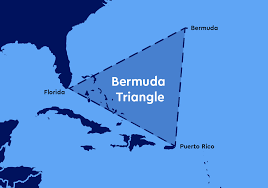VLCC Ship: The Giants of Global Oil Transportation

In the vast and dynamic world of maritime transport, VLCCs (Very Large Crude Carriers) stand as colossal symbols of industrial strength and efficiency. These massive oil tankers play a crucial role in the global energy supply chain by transporting crude oil across oceans from production sites to refineries around the world. Designed for long-haul voyages and capable of carrying vast quantities of cargo, VLCCs have revolutionized how oil is shipped globally. This blog delves into what a VLCC ship is, its specifications, history, importance, and the evolving role it plays in the modern shipping industry.
What is a VLCC Ship?
VLCC stands for Very Large Crude Carrier, a classification given to large oil tankers that have a deadweight tonnage (DWT) ranging from 200,000 to 320,000 tons. These ships are among the largest in the world and are specifically designed to transport crude oil in bulk quantities. A typical VLCC can carry about 2 million barrels of crude oil in a single voyage, which is enough to meet the daily oil demand of several large countries.
VLCCs are part of a broader classification system that also includes:
-
Aframax (80,000–120,000 DWT)
-
Suezmax (120,000–200,000 DWT)
-
ULCC (Ultra Large Crude Carrier, 320,000+ DWT)
While ULCCs are larger, VLCCs are far more commonly used due to their balance of size and port accessibility.
Dimensions and Specifications
VLCCs are engineered with precision to balance capacity, stability, and navigational safety. Some of the key specifications of a typical VLCC include:
-
Length: Around 330 meters (1,082 feet)
-
Beam (width): Around 60 meters (197 feet)
-
Draft: Up to 22 meters (72 feet) when fully loaded
-
Speed: Approximately 15 knots (28 km/h)
-
Cargo Capacity: About 2 million barrels or approximately 318,000 DWT
-
Crew: Usually staffed with 20–30 people, depending on automation and operational complexity
Because of their immense size, VLCCs require deepwater ports and specialized terminals for loading and unloading.
History of VLCCs
The concept of VLCCs emerged in the mid-20th century, particularly during the oil boom years following World War II. As global oil consumption soared and long-distance trade routes expanded, the need for larger, more efficient tankers became evident.
The first generation of VLCCs appeared in the 1960s and 70s. The increase in size allowed oil companies to reduce transportation costs per barrel significantly. With the closure of the Suez Canal in 1967 (due to the Six-Day War), ships had to reroute around the Cape of Good Hope, making larger tankers more viable and economical for long voyages.
Role in the Global Economy
VLCCs are the backbone of the global oil supply chain. Approximately 60% of the world’s crude oil is transported via sea, and a substantial portion of that is carried by VLCCs. Major oil-producing countries like Saudi Arabia, Iran, UAE, Venezuela, and Nigeria rely heavily on VLCCs to transport oil to consumer nations such as China, India, Japan, South Korea, and the United States.
VLCCs often sail on long-haul routes such as:
-
Middle East to Asia
-
West Africa to Europe
-
South America to the United States
These ships offer an economy of scale that no other transport mode can match for bulk crude oil shipments.
VLCC Ports and Infrastructure
Due to their enormous size, not every port can accommodate a VLCC. These ships require deepwater harbors with specialized facilities, such as:
-
Single Point Moorings (SPMs): Offshore loading/unloading buoys for large tankers
-
Floating Storage and Offloading Units (FSO/FSU): For transshipment or storage
-
Large Crude Oil Terminals: Located in places like Ras Tanura (Saudi Arabia), Fujairah (UAE), Rotterdam (Netherlands), and Port of Singapore
To improve efficiency, some oil companies utilize ship-to-ship transfers at sea, where VLCCs transfer cargo to smaller tankers or vice versa.
Environmental Considerations
VLCCs operate in a highly regulated environment due to their potential environmental impact. A single accident or spill can cause catastrophic damage to marine ecosystems. Consequently, VLCCs must comply with international regulations, such as:
-
MARPOL (Marine Pollution) Convention
-
IMO 2020 – mandates the use of low-sulfur fuel
-
Double-hull design – reduces risk of oil leakage in case of hull breach
-
Ballast water treatment systems – to prevent invasive species from spreading
Shipping companies are also investing in greener technologies, such as LNG dual-fuel engines, advanced hull coatings for fuel efficiency, and even wind-assisted propulsion systems.
Future of VLCCs
The future of VLCCs is being shaped by a combination of market trends, technological advancements, and environmental regulations. Some notable future trends include:
-
Digitalization: Integration of AI and IoT for real-time monitoring and predictive maintenance.
-
Autonomous Navigation: Trials for semi-autonomous ships are already underway.
-
Decarbonization: Research into zero-emission fuels such as hydrogen, ammonia, and biofuels is gaining momentum.
-
Changing Demand: With the global energy transition underway, there could be a shift in oil transport demand, but oil is still expected to play a key role for decades.
Challenges Faced by VLCCs
VLCCs face several operational and market challenges, such as:
-
Volatility in oil prices affecting charter rates
-
Geopolitical risks in regions like the Persian Gulf and South China Sea
-
Port congestion and delays due to limited deepwater terminals
-
Piracy and security threats, especially off the coasts of West Africa and Somalia
Despite these challenges, VLCCs remain indispensable to global trade and energy distribution.
Conclusion
VLCC ships are not just vessels; they are floating giants that drive the lifeblood of modern economies. Their incredible capacity, engineering marvel, and operational efficiency make them essential in a world dependent on oil. As the maritime industry evolves towards sustainability and automation, VLCCs are also adapting—proving that even the largest ships can navigate the tides of change.
Whether it’s supplying refineries with crude oil or acting as floating storage during times of oversupply, VLCCs will continue to shape the maritime and energy industries for years to come.







Leave a Comment